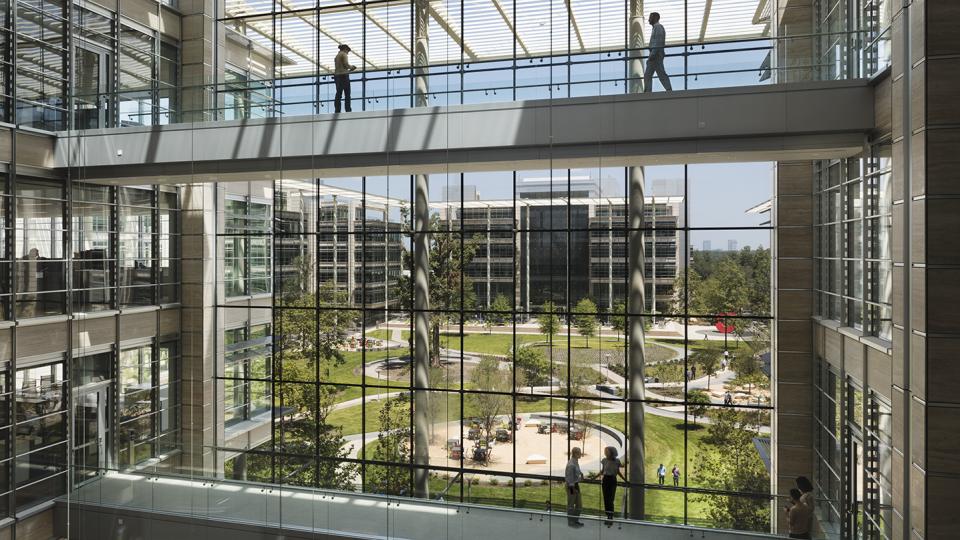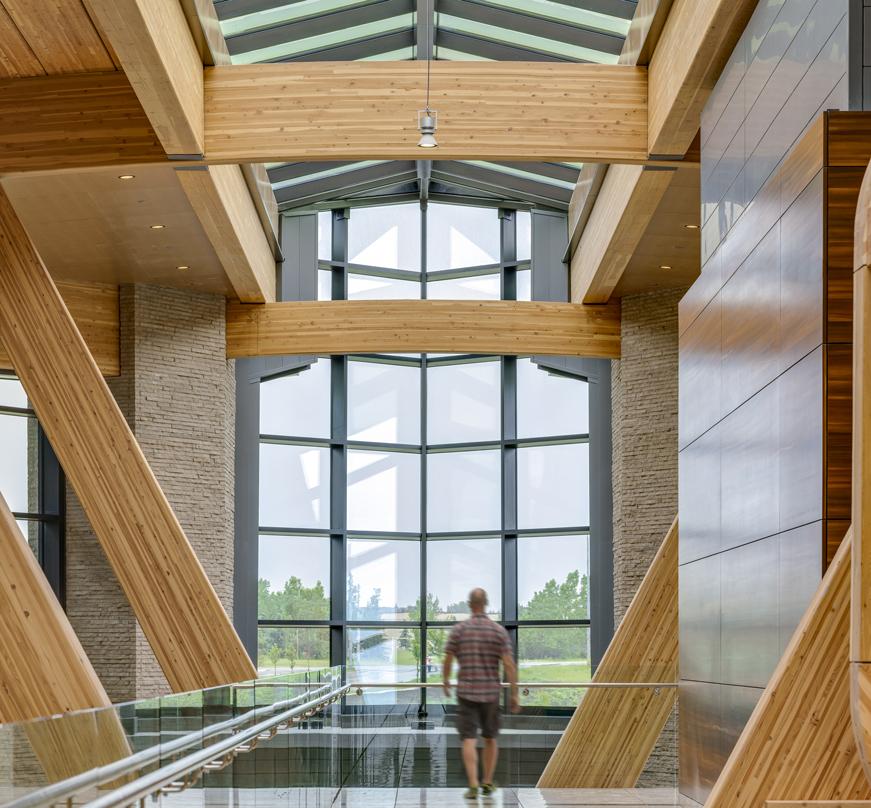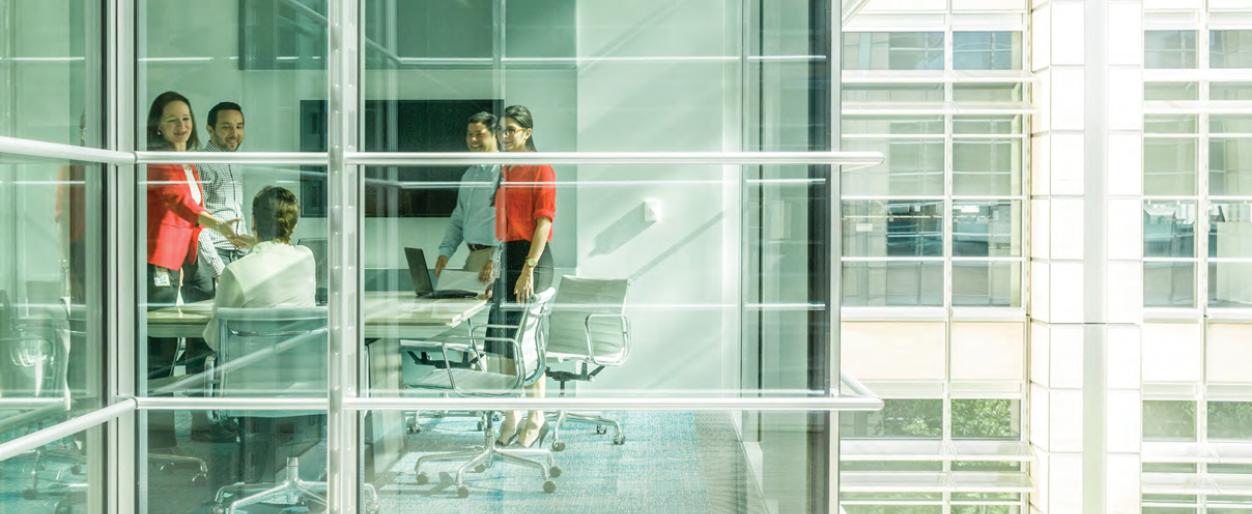How Biophilic Design Enhances Workplace Productivity
Biophilic design in architecture, which integrates natural elements into the built environment, can significantly enhance workplace productivity by fostering a connection with nature that improves overall well-being and cognitive function. Studies have shown that incorporating features such as natural lighting, indoor plants, water features, and natural materials can reduce stress, increase creativity, and see up to a 20% increase in employee productivity.
Innovative Solutions for Urban Workspaces
Pickard Chilton, specializing in design architecture, has embraced biophilic design principles to create workspaces that support physical and mental well-being. One of our recent projects in New York City presented a unique challenge. The existing perimeter conditions allowed for only 36% natural light and limited views of nature. To address this, we proposed the innovative solution of adding digital screens between the windows. These screens extended the perceived "windows" to 60%, offering simulated views of nature.

Benefits of Simulated Nature Views
Research suggests that simulated views of nature, such as those provided by LED screens, can lower heart rate and blood pressure. This biophilic approach enhanced the workspace's aesthetic appeal and contributed to a healthier and more productive environment. By prioritizing biophilic principles, workplaces can create spaces that not only support physical and mental health but also drive higher levels of engagement and efficiency.
Creative Integration of Biophilic Elements
Incorporating biophilic elements into existing interior projects allows us to think outside the box and find creative solutions. Natural lighting, for instance, is a critical component of biophilic design. In spaces where natural light is limited, we can use advanced lighting technologies that mimic the qualities of natural sunlight. Indoor plants and water features also play a significant role in enhancing the workplace atmosphere, reducing stress levels, and boosting employee morale.
Transformative Impact on Workplace Architecture
Biophilic design offers a transformative approach to workplace architecture. By integrating natural elements, whether through physical modifications or innovative technologies, we can create environments that promote well-being and productivity. As demonstrated in our New York City project, even in spaces with limited natural resources, thoughtful design can significantly impact employee performance and satisfaction. Embracing biophilic principles is not just a trend but a necessity for creating healthier, more productive workplaces.


